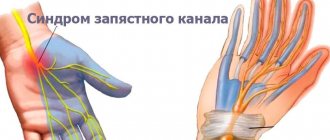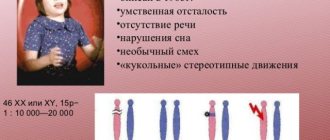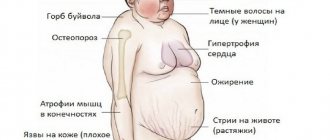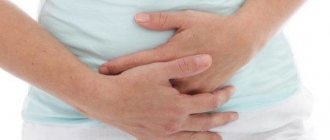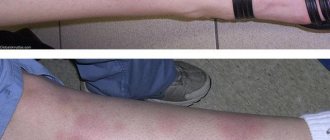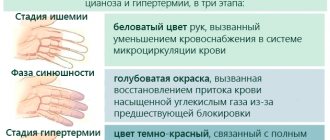What is dumping syndrome
Patients suffering from peptic ulcer disease often require urgent surgery. The slightest mistake leads to a negative result, so dumping syndrome is a common complication of unsuccessful intervention.
The condition is characterized by a disruption in the absorption of nutrients, which reduces the patient’s quality of life and leads to partial or complete disability. Due to disorders of motor-evacuation and secretory functions, patients suffer from rapid gastric emptying.
Dumping syndrome - rapid emptying of the operated area of the stomach
Dumping attack is a condition in which a patient experiences an attack of illness while eating or after a meal.
Pathology is interconnected with other processes occurring in the human body. The rapid release of food from the stomach into the small intestine leads to increased glucose absorption, which increases insulin levels and lowers blood sugar. Hypoglycemia occurs, leading to deterioration in health.
Description
Dumping Syndrome develops after bypass surgery or surgery to partially or completely remove the stomach. Pathology can also occur in people who have undergone any surgical intervention on the esophagus. Moreover, in some cases it appears almost immediately after the operation, and in others only years later.
Dumping syndrome develops after bypass surgery or surgery to partially or completely remove the stomach
Sometimes this disease is spoken of simply as a rapid emptying of the stomach, violating the physiological norm. In this case, food, especially those containing sugar, enters the small intestine unnaturally quickly.
In most patients with this diagnosis, symptoms appear within half an hour after eating. In another part of patients, signs are noticeable after a longer time (after an hour or more). Others experience both early and late symptoms of Dumping Syndrome.
The disease can be prevented by changing your diet after surgery. Basic principles of postoperative diet:
- reducing portion sizes;
- eliminating foods high in sugar.
Treatment of Dumping Syndrome always involves a diet; this point cannot be neglected. More complex cases require the use of medications. Sometimes you have to resort to surgery.
In most patients, symptoms appear within half an hour after eating.
Reasons for the formation of the syndrome
Dumping syndrome most often occurs in people who have undergone gastrectomy or vagotomy (intersection of the main trunk or branch of the vagus nerve). Sometimes the problem develops in patients who have not undergone surgery.
After surgery
Reducing the length of the digestive tract leads to rapid passage of food and poor digestion of food. In this form, it enters the upper section of the small intestine, stretching the walls of the organ. This leads to the following consequences:
- increased intestinal motility;
- increasing the level of absorption of carbohydrates that penetrate into the blood in large quantities;
- blood thickening.
Various biologically active substances enter the bloodstream:
- kinin;
- serotonin;
- histamine.
As a result, a hormonal imbalance occurs in the gastrointestinal tract, and the level of the following substances changes dramatically:
- neurotensin;
- gastrin;
- peptide;
- enteroglucagon.
The probability of developing the syndrome is 5–10% after vagotomy, and after resection it is 20–40%.
In unoperated people
In patients who have not undergone surgery, the time of digestion and the duration of food movement are of great importance. The following reasons can lead to changes in the motor function of the digestive organs:
- tumors and fistulas;
- disruptions in the functioning of the stomach and intestines;
- diabetes;
- stress and depression;
- partial intestinal obstruction;
- chronic enteritis - inflammation of the small intestine.
Therapeutic diet
https://www.youtube.com/watch?v=ytpressru
The main direction in the treatment of dumping syndrome is compliance with strict dietary restrictions. To control the course of the disease, you need to pay attention to the following points:
- adjust the diet, that is, remove from it products that provoke a dumping attack;
- monitor your diet;
- follow the principles of the dietary menu.
In case of dumping syndrome, the main recommendations for creating a daily menu contain information about the preferred methods of processing products, the number of meals and the quality characteristics of the products. For this disease it is necessary:
- divide the daily food intake into 5-8 meals;
- You can only steam food, stew it with a minimum amount of fat, bake it without allowing a crust to form, or boil it in water;
- for several months after gastric resection surgery, you need to eat food in a homogeneous state, and only after that you can try eating finely chopped foods;
- liquid and solid foods should be taken separately from each other (if it is soup, then you should first drink the soup and then eat the rest).
In addition, patients with dumping syndrome should not take large amounts of food, more than 200 ml, at one meal. Fried foods that are too hot or too cold are also not allowed. You can eat food whose temperature is felt quite comfortably by the back of your hand.
Carbohydrates can provoke an attack of dumping syndrome:
- bakery;
- White bread;
- jam;
- honey;
- chocolate;
- marshmallows and other sweets;
- pasta;
- chips, crackers;
- dairy products;
- mayonnaise, ketchup;
- smoked meats;
- sausages.
Meals for dumping syndrome should be prepared taking into account the daily dietary allowance. For a patient weighing 75-80 kg, the following amount of food per day is required:
- proteins – 140-160 g;
- carbohydrates – 300-350 g;
- fats – 100-110 g;
- salt – no more than 15 g.
At the same time, the calorie content of a given amount of food should not exceed 3000 kcal per day.
Classification
Pathology is classified according to two criteria: time of occurrence and severity.
By time of appearance: early and late forms of pathology
There are two forms of the disorder - early and late. In the first case, an attack occurs a short period of time after eating (10–20 minutes). The use of:
- dairy products;
- liquid food;
- foods high in carbohydrates (sweets, baked goods);
- large portions of food.
Manifestations of late dumping syndrome occur 2–3 hours after a meal. The duration of the attack ranges from 30 minutes to 1 hour.
By severity
Dumping syndrome is characterized by 3 degrees of severity:
- mild: the attack lasts about 30 minutes, occurring due to the consumption of dairy and sweet products;
- medium: appears after eating different types of food, the duration of the attack is 1 hour, performance decreases;
- severe: the patient is severely exhausted, unpleasant symptoms occur after every meal, performance is noticeably reduced, the duration of the attack can exceed 1 hour.
Diagnostic measures
The primary diagnosis is established thanks to the clinical picture. The patient is additionally recommended to consult with a psychotherapist and neuropsychiatrist. Diagnosis includes a glucose challenge test. Before the test, the doctor measures the patient's heart rate and blood pressure. A small amount of blood is drawn.
The patient is administered 150 ml of glucose solution. If the condition worsens, all measurements are repeated. In the absence of an attack, samples are taken after 15-20 minutes. Based on them, the doctor can determine the presence of a deviation.
Laboratory tests are required to make a diagnosis
It is worth resorting to laboratory tests. They help identify deviations for their subsequent correction. Often diagnosed:
The listed deviations often accompany dumping syndrome. They need special treatment. It is also worth giving preference to the diagnosis of concomitant neuropsychiatric disorders. They are usually present in people who have undergone surgery for cancer. This type of deviation significantly worsens the patient’s condition.
Such patients often suffer from vitamin deficiencies.
Symptoms of the syndrome
Dumping syndrome manifests itself with various signs, depending on the type of pathology.
Characteristics of sympatho-adrenaline, vagotonic, mixed types of disease - table
| Digestive system | The cardiovascular system | Skin covering | Nervous system | |
| Sympatho-adrenaline type | constipation; flatulence; dry mouth. | increased blood pressure; tachycardia. | pallor | anxiety; headache; tremor, convulsions; numbness of the limbs; chills. |
| Vagotonic type | nausea; painful sensations in the abdomen; increased salivation; diarrhea. | low blood pressure; bradycardia. | increased sweating; redness of the skin. | suffocation; weakness; nasal congestion; dizziness. |
| Mixed type | combines manifestations of sympatho-adrenaline and vagotonic forms | |||
Diagnostics
The disease is diagnosed based on anamnesis (collection of information about the patient’s condition), subjective and objective manifestations.
History taking
This is the first stage of diagnosis. The patient's medical history may include:
- previous surgery on the stomach or small intestine;
- seizure symptoms;
- complaints about symptoms that occur after eating liquid, dairy and carbohydrate-rich foods.
Urine and blood examination
Diagnostics of blood and urine allows you to identify the level of glucose and other components. A patient suffering from dumping syndrome exhibits the following symptoms:
- decrease in the number of red blood cells;
- decrease in plasma volume in the blood;
- increased levels of serotonin in the blood and urine;
- decrease in hemoglobin;
A blood test can reveal a decrease in hemoglobin levels and other signs
- hyperglycemia in the early stages of the syndrome;
- decrease in serum potassium.
Provocation using a dumping test.
To clarify the diagnosis and identify the severity, a glucose challenge is used. Diagnostics takes place in several stages:
- Preliminary blood sampling and pressure measurement.
- Administration of glucose solution.
- Repeated blood pressure measurements and blood tests when an attack occurs.
- Carry out an additional test after 10–15 minutes if there is no reaction.
Be sure to check for late hypoglycemia after 6 hours
X-ray of the stomach
To clarify the diagnosis and exclude other pathologies, fluoroscopy is used. During the study, contrast barium is used. As a result, they find:
- rapid movement of the barium mixture from the operated area;
X-ray of the stomach is an additional method for diagnosing dumping syndrome
- increased peristalsis of the small intestine with weakened organ motility;
- increased motor activity of the large intestine.
Billroth operations and gastrectomy
The first surgeon who not only removed a part of the stomach affected by cancer on January 29, 1881, but also came out of a patient after a serious operation, was the Austrian Christian Albert Theodor Billroth. Later he was invited to see the great surgeon Pirogov, who was dying of oral cancer, and he also operated on the poet Nekrasov. The most important gastric operations, used to this day, were developed by Billroth and bear his name.
Gastric resection according to Billroth I consists of connecting the remainder of the stomach with the duodenum “end-to-end”. Of course, this does not correspond to human nature, which has formed the transition between the stomach and intestines tightly closed by a muscle sphincter. Evacuation of food masses from the operated stomach occurs quickly, however, the stomach partially plays the role of a reservoir for food. The main thing is that the gastric mucosa does not come into contact with the small intestinal mucosa, which is completely different in structure and function, which protects the latter from chronic ulcerations.
During gastric resection according to Billroth II, the remaining part of the stomach is sutured side-to-side with the jejunum, and the duodenum is taken out of circulation, which is not at all physiological. Subtotal gastrectomy according to Billroth II is very common in oncology; surgical tactics are determined by the cancerous tumor. It is with this option that dumping syndrome often develops.
Gastrectomy - complete removal of the stomach necessarily leads to dumping syndrome. The esophagus is connected to the intestine, there is no reservoir for temporary storage of food with simultaneous digestion, the role of which was regularly performed by the stomach, food immediately enters the intestine, which is not adapted to unprepared food masses.
What is dumping syndrome
With stomach cancer, such pronounced biochemical disturbances occur in the patient’s body that even at the end of the last century, a quarter of patients died after surgery from “it’s not clear why.” Today, the modern science of caring for postoperative patients has made it possible to forget about this sad quarter, however, the biochemical processes in the body of a gastric patient have not become smaller.
Rapid evacuation of food into the intestine leads to disruption of the patient's condition, which is based on serious disturbances in biochemical processes. A few minutes after eating, the patient literally becomes weak. The intensity of weakness is very different, from short-term and fundamentally not interfering with life and work, to a state of jelly, when powerlessness does not allow you to lift a finger.
Weakness is accompanied by strong palpitations and even pain in the chest, but these are not anginal pains caused by a malnutrition of the myocardium - ischemia, but cardialgia, that is, as if pain in the heart, but in fact not in the heart, it just seems so to the patient. With true heart pain, the heart area does not hurt at all, but it hurts behind the sternum, the pain radiates to the arm, shoulder, and jaw. But in especially severe cases of dumping syndrome, transient changes such as myocardial ischemia are noted on the ECG.
There are surges in blood pressure. My hands are shaking, my head is spinning, my ears are ringing. The patient is pale or, on the contrary, his face turns red, and he almost always sweats profusely. There is often a urge to urinate. Worries include nausea and vomiting, abdominal pain, loud rumbling, belching, the urge to defecate, even diarrhea. The clinical picture is very varied, it is clear that the person is very ill, some require bed rest for a couple of hours after each meal.
The patient experiences fear, the symptoms are so unpleasant and varied. He may lose consciousness, which he does not always remember afterwards. Oddly enough, memories during dumping syndrome also do not always correspond to reality; amnesia after an attack is also possible. In this regard, they even identified an episodic variant, when the syndrome develops immediately after eating, accompanied by fear, which the patient does not remember well. The paroxysmal variant occurs a couple of hours after eating and leads to loss of consciousness and amnesia. And there is an objective biochemical reason for all this.
How often is dumping syndrome observed?
This picture can appear after each meal, but during breakfast it is more pronounced, at lunch it appears a little less, and at dinner even less. Symptoms may last a few minutes or may last up to three hours. This is not all, because the patient also experiences weakness the rest of the time, but not so intense, and over time, asthenia develops, including a decrease in potency.
How to treat pathology
Conservative, surgical and traditional methods are used in the treatment of the disease.
Drug therapy
Treatment with drugs is represented by an integrated approach:
- General restorative therapy:
- nicotinic acid (intramuscular);
- B vitamins;
- transfusion: albumin, red blood cells, blood plasma.
- Replacement therapy. Substances and means used:
- enzymes (Panzinorm, Creon, Acidin-pepsin, Pancreatin);
- insulin and glucose;
- hydrochloric acid or natural gastric juice before meals.
- Sedative therapy. To relieve panic attacks, the following are used:
- Aminazine;
- Trioxazine;
- Relanium;
- Nitrazepam,
- Alprazolam.
- Auxiliary therapy:
- Atropine solution - to inhibit peristalsis;
- novocaine blockades - reduce the process of gastric emptying;
- Somatostatin and Octreotide - eliminate signs and prevent the development of dumping attacks;
- Anestezin, antihistamines (Suprastin) - to reduce the body’s reaction to the rapid entry of food into the intestines;
- ganglion blockers (Pentamin), corticosteroids (Prednisolone, Cortisone) - in severe condition of the patient.
Photo gallery of medicines
Panzinorm replenishes enzyme deficiency Prednisolone is prescribed for severe patient conditions Nitrazepam is necessary to relieve panic attacks
Surgical intervention
The operation is performed to achieve the following results:
- improving digestion function;
- normalization of the patient's condition;
- reducing the rate of movement of food from the operated part of the stomach.
Indications for surgical intervention are:
- lack of results from drug therapy;
- medium and severe stage.
Reconstructive gastroduodenoplasty is used, during which a special graft is installed between the intestines and the stomach - it slows down the process of evacuation of the organ’s contents, which has a positive effect on the digestion process. However, the effectiveness of such an event has not been fully confirmed.
ethnoscience
Traditional recipes perfectly complement the means of official medicine, but using them alone, especially independently, is not recommended.
The following herbs are used:
- motherwort, valerian to reduce blood pressure;
- sea buckthorn oil, a decoction of St. John's wort and chamomile, plantain extract to eliminate inflammation (taken on an empty stomach);
- licorice rhizomes, nettle, rose hips to strengthen the body.
The components are used both separately and as part of collections. A decoction containing the following ingredients is useful:
- rose hips - 2 g;
- valerian - 2 g;
- St. John's wort - 2 g;
- licorice - 1 g;
- nettle - 2 g;
- Potentilla - 1 g;
- yarrow - 2 g;
- oregano - 2 g;
- plantain - 2 g;
- bergenia - 1 g;
- burnet - 1 g;
- rose hips - 2 g.
Preparation of the decoction:
- Take the dried ingredients and grind them.
- Add the components to the container, and then pour in 0.5 liters of water.
- Cook for 30 minutes, strain and cool to room temperature.
Take the medicine 3 times a day 15 minutes before meals. The duration of treatment is 10 days, then a break for 2 weeks.
Traditional medicine - photo gallery
Nettle strengthens the body well Sea buckthorn oil reduces inflammation Valerian soothes and reduces blood pressure
Companion diet
During treatment of dumping syndrome, the patient must adhere to a special diet. The principles of nutrition are as follows:
- small portions;
- fractional meals - 5–7 times a day;
- eating slowly;
- drink liquids only after meals (after 10–15 minutes);
- amount of liquid - no more than 1 glass per serving;
- After a meal, it is recommended to lie down for 15–30 minutes.
In the first 3–4 months, the patient adheres to diet No. 1. Allowed foods and dishes:
- pureed cereal soups;
- wheat bread, but not fresh;
- unhealthy cookies;
- soft-boiled egg;
- lean beef dishes;
- boiled fish: carp, perch;
- vegetable puree (except cabbage);
- mild cheese;
- non-acidic juices.
It is prohibited to use:
- soups with rich broth;
- black bread;
- unchopped fruits and vegetables;
- chocolate;
- pies and pastry products;
- grilled meat;
- offal: kidneys, liver;
- marinades;
- cold drinks;
- ice cream.
3–4 months after the operation, the patient is prescribed diet No. 5. Allowed to use:
- lean beef and veal;
- chicken;
- low-fat fish varieties: carp, cod;
- vegetarian cereal soups;
- Rye bread;
- unsweetened cookies;
- crumbly porridge;
- cereals: rice, rolled oats;
- unsweetened cereal casseroles;
- curdled milk;
- tomatoes with vegetable oil.
Excluded from the diet:
- offal;
- canned food;
- smoked sausages;
- cold drinks;
- cocoa and chocolate;
- baking
Sample menu for the day: in the first 3–4 months and subsequent period - table
| Times of Day | First 3–4 months | After 3–4 months |
| All day |
|
|
| First breakfast (optional) |
|
|
| Second breakfast (to choose from) |
|
|
| Lunch (to choose from) |
|
|
| Dinner (to choose from) |
|
|
| Late dinner (at 21:00 or 2 hours before bedtime) | unsweetened jelly or kefir | glass of kefir |
Prohibited products - photo gallery
It is not recommended to consume chocolate both during the first time after surgery and in the subsequent period. Smoked sausage is an undesirable product for the patient. Ice cream should be excluded from the diet.
Treatment
In the treatment of dumping syndrome, it is necessary to use possible methods of correcting impaired digestion and neuropsychic status.
Conservative methods
It is performed for patients with the first or second severity of the syndrome. The diet is designed to slow down the evacuation of food. It is recommended to eat 6 times a day, in limited portions. Solid and liquid food are consumed separately. First, the patient should eat the second dish, and half an hour later - the first. It is recommended to drink a glass of tomato juice 30 minutes before starting a meal. It stimulates pancreatic secretion.
The amount of carbohydrates in food is sharply limited, sugar is replaced with sorbitol. Simple carbohydrates should be completely excluded from the diet: honey, sweets, jam, refined carbohydrates: soft bread and pastries, cereals, pasta, milk, sour cream, smoked meats. Fats are allowed in small quantities. After eating, the patient needs to lie down for 30 minutes.
General restoratives - glucose is administered intravenously with a calculated dose of insulin under the skin, B vitamins, nicotinic acid. In cases of moderate to severe severity, patients are advised to receive a transfusion of Albumin solution, native plasma, red blood cells, and plasma substitutes.
To slow down intestinal motility, Atropine injections are used half an hour before meals.
As replacement therapy, it is recommended to use Pepsin, gastric juice, and enzymatic drugs (Pancreatin, Panzinorm, Creon). For significant weight loss, corticosteroids and anabolic hormones are recommended. Barbiturates and sedatives are used for sedative purposes.
Surgery
Surgical intervention is indicated for severe dumping syndrome and unsuccessful conservative treatment. The essence of repeated intervention: plastic anastomosis, creating conditions for greater participation of the duodenum in the process of food digestion. A graft from your own small or large intestine is used.
The operation is called “reconstructive gastrojejunoduodenoplasty.” Before the operation, they try to prepare the patient with medications and nutritious intravenous solutions. There are different types of surgical reconstruction:
- reduction in the diameter of the gastrointestinal anastomosis;
- creation of an additional anastomosis between the afferent and efferent loops of the small intestine;
- formation of an additional reservoir from paired intestinal loops and others.
To choose the optimal operation option, surgeons take into account the severity, the nature of functional disorders of the digestive organs and the whole body, the patient’s age, and the period after the first operation.
The result of the new intervention is a decrease in the intensity and frequency of attacks, improved digestion, and increased body weight. The best effect is the elimination of dumping syndrome. Treatment of mild dumping syndrome gives good results. It is important to notice negative symptoms promptly and consult a doctor.

